Affiliates note: As an Amazon Associate I earn from qualifying purchases. My content may contain affiliate links to products and services. If you click through and make a purchase, I'll receive a small commission. It does not affect the price you pay.
How to Make Chicken Bouillon Powder in the Oven or Dehydrator
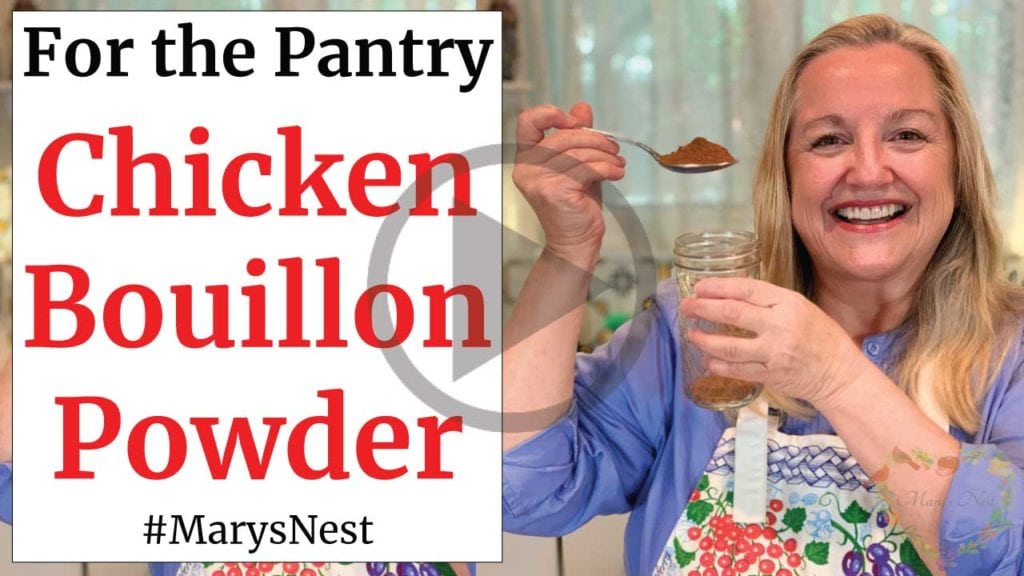
In this video, you’ll learn how to make chicken bouillon powder in the oven or dehydrator. With this easy process, you can create shelf-stable bouillon and store it for up to one year in your pantry.
To make bouillon powder, you can use broth, stock, or bone broth. Whatever you start with, your bouillon will turn out great. (Check out my earlier video to learn about the difference between broth, stock, and bone broth and how to make them.)
Why Homemade Bouillon Powder
Bouillon powder of any kind—beef, chicken, or vegetable—is an essential ingredient to have in your pantry. Unfortunately, store-bought bouillon contains assorted chemicals, preservatives, and artificial colorings that we don’t want to bring into our traditional foods kitchen.
So what can you do? Make homemade bouillon powder by following this easy and affordable printable recipe. Making chicken bouillon powder is especially economical if you use your homemade Roast Chicken Bone Broth as the base. Roast chicken bone broth only costs pennies a jar to make since you use the carcass of a roast chicken—something many folks throw out—to make your bone broth.
Bouillon is a Real Space Saver
One of my favorite reasons for making homemade chicken bouillon powder is because of the storage space it saves in your kitchen. Once dehydrated, one cup of chicken broth, stock, or bone broth reduces down to approximately one tablespoon of powder! For example, you can easily store several bottles of homemade broth as shelf-stable bouillon in your pantry.
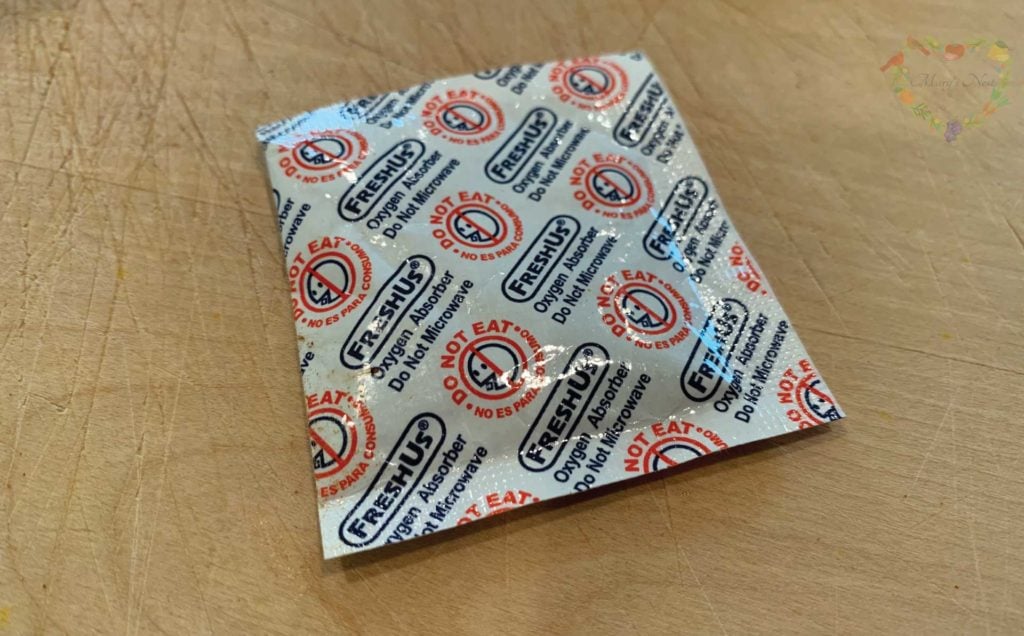
I have found the best way to store bouillon is in canning jars with an oxygen absorber. This handy insert will help keep out moisture.
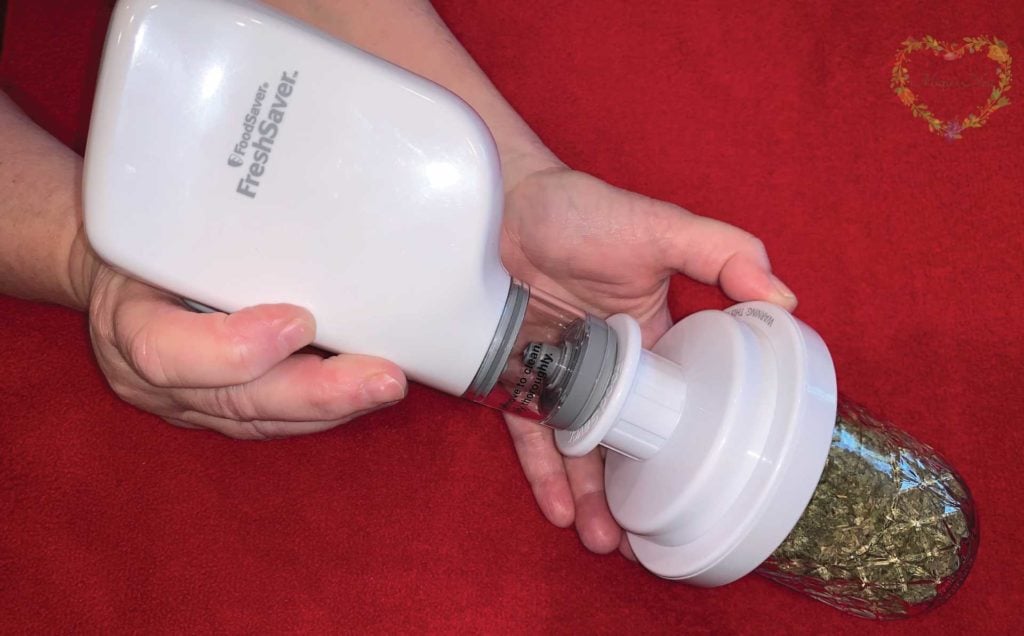
If you want to take another step to further extend the shelf life of your bouillon, use a FoodSaver device to extract as much air out of the jar as possible. My favorite is the reasonably-priced, handheld FoodSaver Vacuum Sealer (or the newer version) with the FoodSaver Jar Kit. (Watch my recipe video to see how to use the FoodSaver.)
How to Use Chicken Bouillon Powder
You can easily rehydrate your Chicken Bouillon Powder by adding it to a cup with hot water. Alternatively, you can add a teaspoon or tablespoon of your bouillon right into your soup pot as a base for soups or stews. You can also mix your bouillon into your gravies or casseroles—wherever you want to add a chicken flavor. It’s very versatile!
More Bouillon Videos
Now that you’ve learned how to make chicken bouillon, check out the videos below where I share with you how to make beef and vegetable bouillon powders too!
Stay in Touch with Mary’s Nest
- Subscribe to My YouTube Channel for Traditional Foods Videos (Free) - When you subscribe, be sure to click on the notification bell that will let you know each time I upload a new video.
- Subscribe to Mary’s Traditional Foods Newsletter (Free) - Get a free 36-page eBook for signing up: How to Stock Your Essential Traditional Foods Four-Corners Pantry.
- Join the Traditional Foods Kitchen Academy - For more detailed videos and exclusive members-only perks, join my YouTube membership community.
- Order The Modern Pioneer Cookbook - Get a hardcover book of Mary's nourishing recipes from a Traditional Foods Kitchen. This bestselling cookbook is published by Penguin Random House with their DK imprint.
- Preorder The Modern Pioneer Pantry - Be one of the first to get Mary's hardcover book about preserving food and making delicious meals from your Four Corners Pantry. Mary's second cookbook is also published by Penguin Random House.
I look forward to having you join me in my Texas Hill Country Kitchen!
I’d like to receive more tips and recipes from Mary’s Nest.
Chicken Bouillon Powder
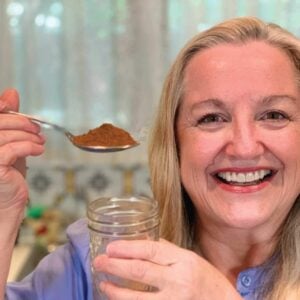
Equipment
- Oven or dehydrator
- Half-size baking sheet (multiple)
- Parchment paper or shallow baking dish (multiple)
- Dehydrator fruit leather trays, optional (multiple)
- Canning jar or another type of jar with a lid
- Foodsaver equipment, optional
Ingredients
- 16 cups Bone broth, broth, or stock that has been de-fatted
- Salt, optional
Instructions
Oven Method
- Pour 1 cup of bone broth, broth, or stock into each of your (1) shallow baking dishes or (2) homemade baking dishes that you placed on a baking sheet. (See video to learn how to create a homemade baking dish from parchment paper.)
- Place baking sheets with baking dishes into a pre-heated oven at the oven's lowest possible temperature setting. The oven temperature should be somewhere between 150°F and 200°F.
- Allow bone broth, broth, or stock to dry until crisp. This will take approximately 8 hours if your oven temperature is set at 170°F. (The drying process time will be longer or shorter if your oven is set lower or higher than the mid-range 170°F.)
- Rotate the baking sheets halfway through the drying time.
- Once the bone broth, broth, or stock has dried to a crisp texture, transfer it to a grinder or blender and pulverize until it is a fine powder. This is your bouillon powder.
- Transfer the bouillon powder to a jar with a lid. Make sure that it is completely dehydrated and VERY dry. Preferably, add a food safe oxygen absorber plus a food safe silica gel pack to the jar to extend its shelf life. (PLEASE SEE IMPORTANT RECIPE NOTES BELOW.) Store in a pantry or cupboard out of direct sunlight, or to extend the shelf life store in the refrigerator or freezer. As with all homemade items, it can be difficult to determine exact shelf lives. If you detect an unpleasant odor or mold at any time, discard immediately.
- Optionally, you may add equal amounts of salt to your bouillon powder to create a product that's similar to commercially manufactured bouillon crystals or bouillon cubes. (For example, if you have one cup of dehydrated broth, you would add one cup of salt to make a two cup mixture that would have a similar consistency to store-bought bouillon.)
- As an extra step to extend your bouillon powder's shelf life, you can use a handheld Foodsaver to extract as much oxygen out of your jar as possible. (See video for how to use the Foodsaver.)
- Alternatively, you can refrigerate or freeze your bouillon powder. It will not change the taste or texture.
Dehydrator Method
- Pour 1 cup of bone broth, broth, or stock into each of your (1) shallow baking dishes or (2) homemade baking dishes that you placed on a baking sheet. (See video to learn how to create a homemade baking dish from parchment paper.) Alternatively, you may use "fruit leather" trays specifically made for your dehydrator.
- Once you have loaded your dehydrator with all the trays, set your dehydrator to 155°F for 10 hours.
- Rotate the trays halfway through the dehydrating process.
- Once the bone broth, broth, or stock has dried to a crisp texture, transfer it to a grinder or blender and pulverize until it is a fine powder. This is your bouillon powder.
- Transfer the bouillon powder to a jar with a lid. Make sure that it is completely dehydrated and VERY dry. Preferably, add a food safe oxygen absorber plus a food safe silica gel pack to the jar to extend its shelf life. (PLEASE SEE IMPORTANT RECIPE NOTES BELOW.) Store in a pantry or cupboard out of direct sunlight, or to extend the shelf life store in the refrigerator or freezer. As with all homemade items, it can be difficult to determine exact shelf lives. If you detect an unpleasant odor or mold at any time, discard immediately.
- Optionally, you may add equal amounts of salt to your bouillon powder to create a product that's similar to commercially manufactured bouillon crystals or bouillon cubes. (For example, if you have one cup of dehydrated broth, you would add one cup of salt to make a two cup mixture that would have a similar consistency to store-bought bouillon.)
- As an extra step to extend your bouillon powder's shelf life, you can use a handheld Foodsaver to extract as much oxygen out of your jar as possible. (See video for how to use the Foodsaver.)
- Alternatively, you can refrigerate or freeze your bouillon powder. It will not change the taste or texture.
Video
Notes
Shop for items used in this blog post or video
Favorite Dehydrating Supplies
- Excalibur 9-Tray Food Dehydrator
- Excalibur Silicone Sheets
- Handheld FoodSaver (older version)
- Handheld FoodSaver Vacuum Sealing System (newer version)
- FoodSaver Vacuum Lids
- Oxygen Absorbers
- Baking Sheets
- Parchment Paper
- Spice Grinder
- Small Canning Jars and Lids
- Fat Separator (Learn about this useful device to help you separate the fat from your bone broth.)
Recommended Reading
Amazon Shop and Shopping Guide
- Visit Mary’s Nest Amazon Shop
- Visit my Shopping Guide page
Get up to 15% off for stocking your Traditional Foods Pantry and equipping your Modern Pioneer Kitchen, including discounts from US Wellness Meats, Farmhouse Teas, Lehman's, Masontops, Cultures for Health, Survival Garden Seeds, Redmond Real Salt, Plan to Eat, and More!
Affiliates note: As an Amazon Associate I earn from qualifying purchases. My content may contain affiliate links to products and services. If you click through and make a purchase, I’ll receive a small commission. It does not affect the price you pay.
Disclaimer:I am not a medical doctor, a medical professional, a dietician, or a nutritionist. All content found on the MarysNest.com website, including text, images, videos, eBooks or eGuides, social media, or other formats, were created solely for informational purposes only. The content is not intended to be a substitute for professional medical advice, diagnosis, or treatment. Always seek the advice of your physician or other qualified healthcare provider with any questions you may have regarding a medical condition or proper nutritional advice. Never disregard professional medical advice or delay in seeking it because of something you have watched in a video or read on this website. Use caution when following the recipe in this video. The creator and publisher of this video and website will not be held responsible for any adverse effects that may arise from the use of this recipe and method or any other recipe and method on this website or corresponding video channel.


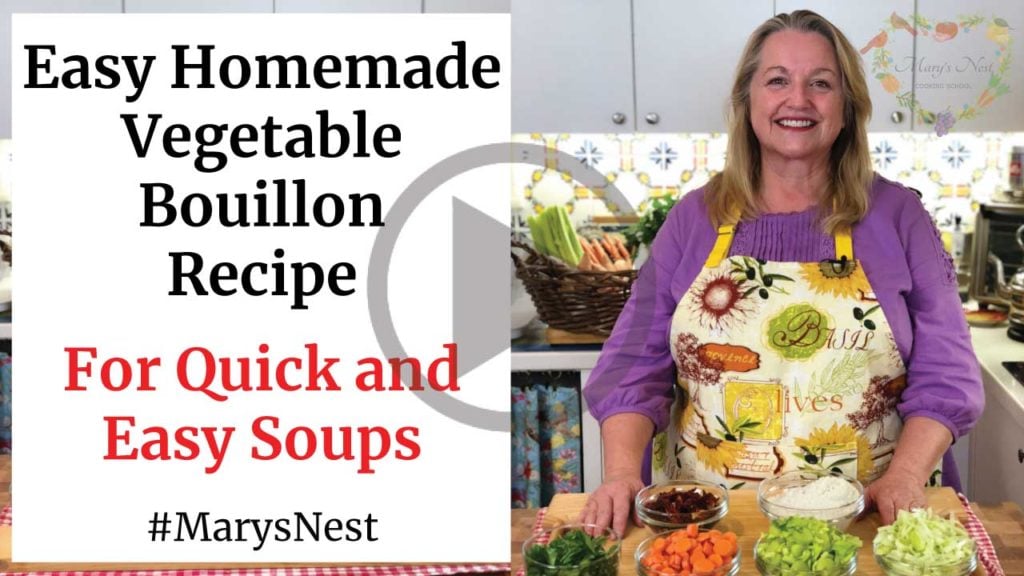
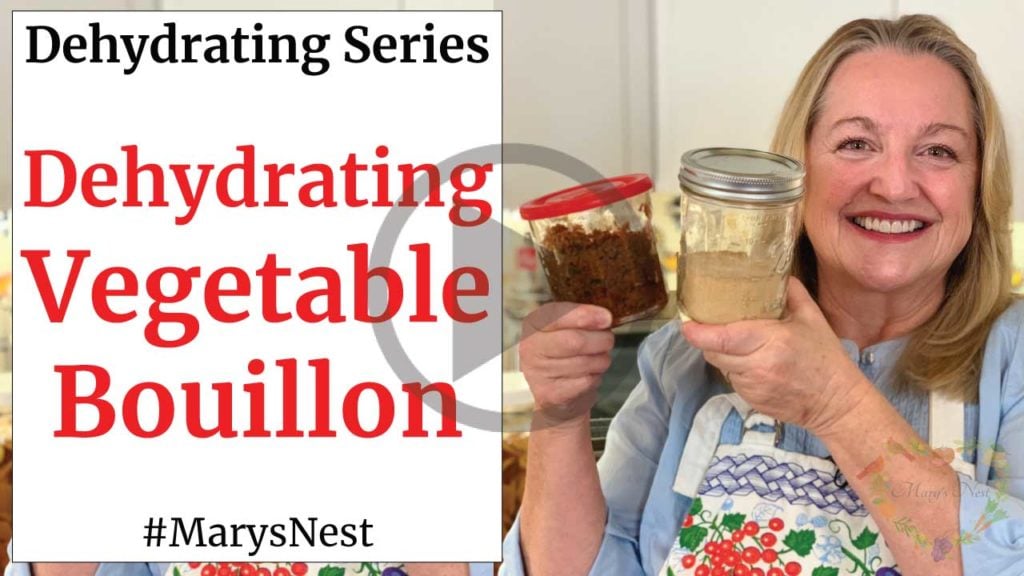
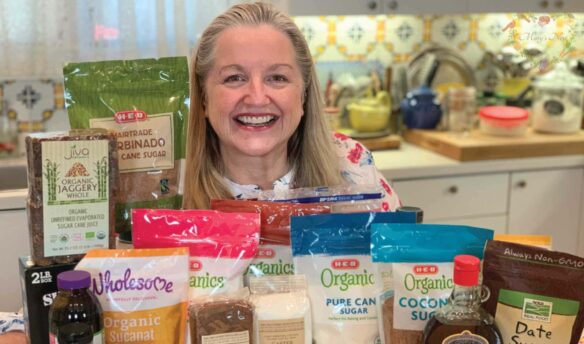
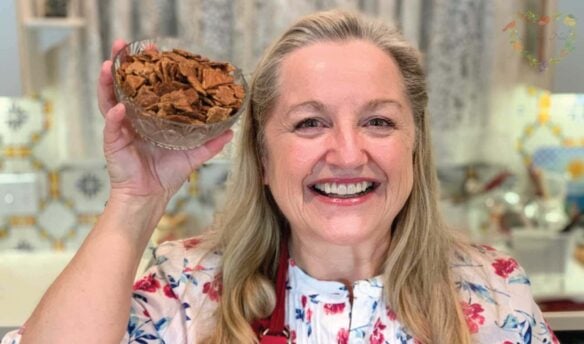
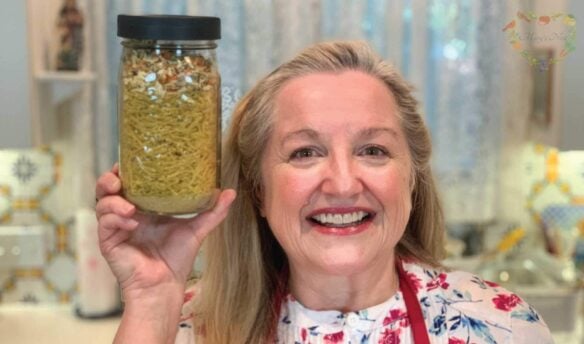
Awesome technique! So much better than storing broth in the freezer. However, I would caution against using oxygen packets for storage of this home product. To be safe against botulism, the dried product needs to be of a reliable dryness, which a home cook might not achieve if all the fat is not removed, etc. To be safe, it would be best to just use the little silica dry pack in a jar with the powder, and be sure to use it within a reasonable time. Oxygen packets have a place when storing items such as dry grain and beans In Mylar bags and dry pack canning.
Hi An, Thank you so much for your comment. Yes, an oxygen absorber and a silica gel pack together work great. Yes, I stress in the recipe that the bouillon should be fully dehydrated and dry. It’s my understanding that… “products that are low in moisture and oil are best for use with the oxygen absorbers. Foods should be below 10% moisture content for storing with absorbers. Storing foods with high moisture content in reduced oxygen packaging may result in botulism poisoning.” Yes, with any homemade item, it is difficult to know for sure what the shelf life is of a particular item and/or in the case of dehydrated foods, if something is sufficiently dehydrated. That is why I always follow the dehydration times as recommended by the National Center for Home Food Preservation or a reliable print material on the subject. But yes, in the end, each home cook is responsible for making the final decision as to what and how they choose to store their homemade items. Dehydrated bone broth, if probably made and de-fatted, and then throughly dehydrated should be “low in moisture and oil”. Thanks so much for sharing your information. I really appreciate it. Love, Mary